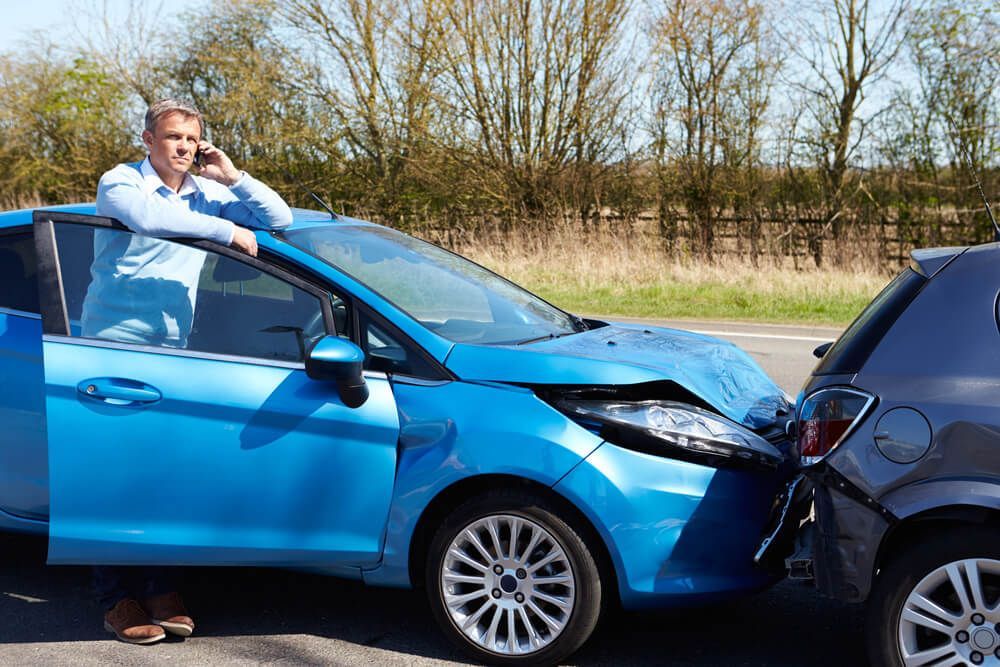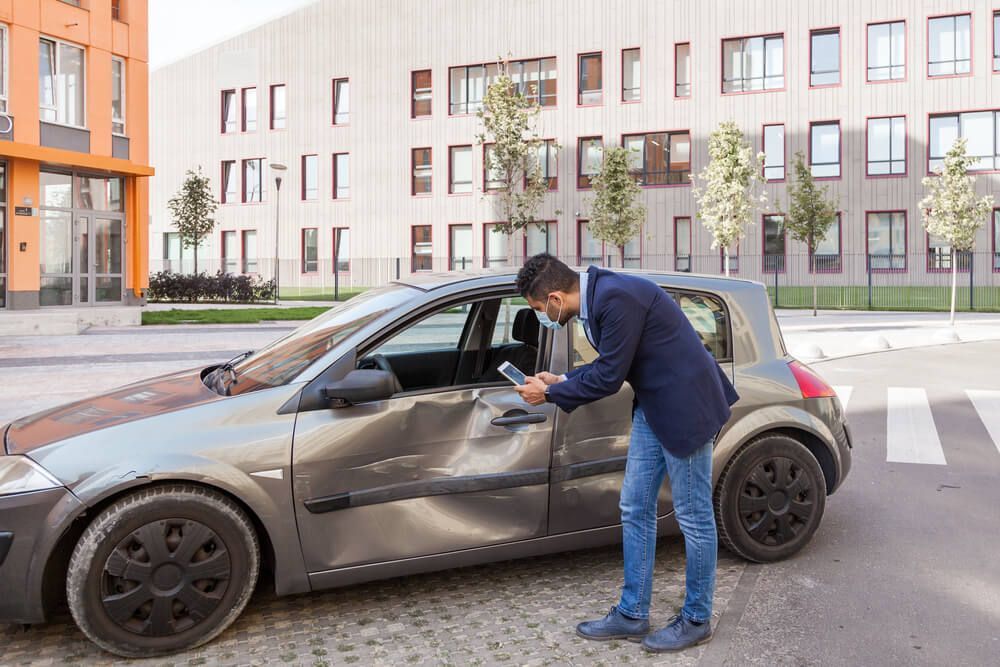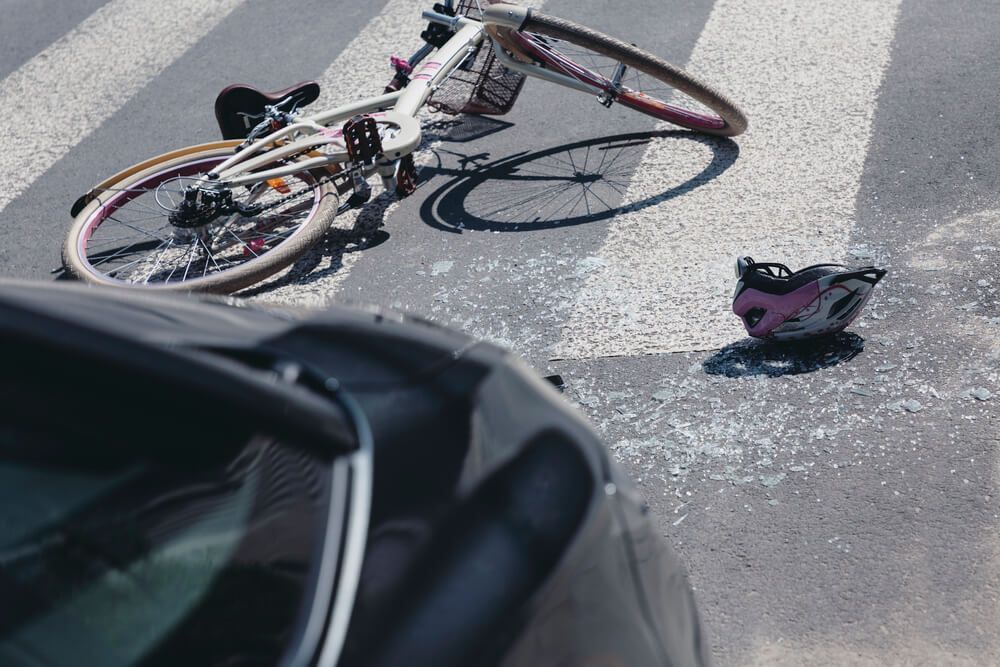Who Has the Right of Way at a Four-Way Stop in Arizona?
Recent Blog Posts
Who Has the Right of Way at a Four-Way Stop in Arizona?
Violations of traffic laws put drivers, pedestrians, and other people on the roads at higher risk of injuries due to accidents. In 2022, drivers’ failure to yield the right of way caused over 21,700 traffic accidents, resulting in 132 deaths and more than 7,800 injuries. Four-way intersections are among the most common locations for accidents involving the failure to yield. Who has the right of way at a four-way stop?
What Is the Right of Way?

The right of way describes a person’s legal right to cross a roadway or enter an intersection. Traffic laws governing the right of way maintain efficient traffic flow and prevent accidents in Phoenix.
However, traffic laws do not grant any driver the right of way. Instead, they specify which driver must yield the right of way to another.
What Does It Mean To Yield the Right of Way?
Yielding the right of way means that a road user stops or slows down so that another road user can cross or enter the road ahead of them. For example, when you stop at a crosswalk to allow a pedestrian to cross the road, you yield the right of way to the pedestrian. Drivers who fail to yield when the law requires them to may receive a traffic citation.
Why Is the Right of Way Important?
It is difficult for drivers to guess what other road users will do, particularly at complicated intersections such as four-way stops. When drivers know who has the right of way at a four-way stop or other traffic interaction, they don’t have to guess because they know to wait for the road user with the right of way to execute their maneuver before they proceed to cross the road or enter an intersection. This reduces the risk of an accident occurring.
When drivers fail to follow right-of-way laws, it creates confusion. Drivers may expect another road user to wait when they don’t or to go when they don’t, resulting in two road users trying to utilize the same road space at the same time, causing a collision.
What Are the Right of Way Laws in Arizona?
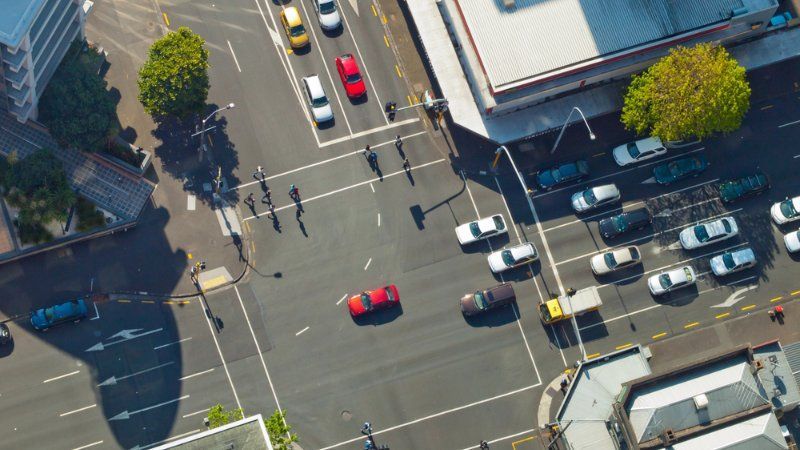
Arizona right-of-way laws apply to all road users, including car, truck, and motorcycle drivers, bicycle riders, and pedestrians. Road users should consider the specific situation and applicable laws instead of assuming they have the right of way.
Crosswalks
Vehicle drivers must yield to pedestrians in a crosswalk. Drivers may not pass a vehicle that stops for a pedestrian at a crosswalk.
Pedestrians must yield to vehicles when the vehicle is too close to yield at the time the pedestrian enters the roadway. When at a controlled intersection, pedestrians must wait for a walk signal to enter the crosswalk.
Outside of crosswalks, pedestrians must yield to all vehicles on the roadway. However, vehicle drivers must always yield to pedestrians who appear to have a visual impairment or a guide dog.
Stop Signs
The first driver to reach a stop sign has the right of way. If two or more drivers reach a stop sign at the same time, the driver on the left must yield to the driver on the right.
Traffic Signals
At intersections with traffic signal lights, the drivers with the steady green light have the right of way. Those making a left turn must yield to oncoming traffic.
Drivers with a blinking red light must stop and yield to whichever driver reaches the intersection first. Drivers with a blinking yellow light should use caution but do not have to stop or yield to other drivers.
Yield Sign
Drivers who have a yield sign must stop and yield to drivers who do not have a yield sign. Drivers may enter the roadway after drivers with no traffic control have exited.
T-Intersections
Drivers approaching a T-intersection must yield to drivers traveling on the through-road unless all drivers at the intersection have a stop sign. If there is a stop sign, the right-of-way rules for stop signs apply.
Parking Spots
Drivers who are entering a roadway from a parking spot must yield to drivers who are already in the roadway. Drivers should not leave a parking spot if it will require a driver in the roadway to yield to them.
When traveling in a parking lot, drivers in the main lanes of the lot have the right of way. Drivers backing out of parking spaces must yield to vehicles in the main lanes.
Emergency Vehicles
Drivers must yield to emergency vehicles when their lights are flashing. Drivers should slow down or stop to allow emergency vehicles to pass.
Uncontrolled Intersections
An uncontrolled intersection is an intersection with no traffic sign or signal. Drivers approaching an uncontrolled intersection must yield to vehicles that are already in the intersection or getting ready to enter the intersection in front of them. If two drivers arrive at an uncontrolled intersection at the same time, the driver on the left must yield to the driver on the right.
Merging Traffic
When two roads or lanes merge into one, drivers who are merging must yield to drivers who are already on the road. Merging drivers should stop or slow down until they can safely enter the road.
What Is a Four-Way Stop?
A four-way stop is an intersection with four points of entry that requires all vehicles to stop before entering. Most four-way stops have a stop sign at each entry to the intersection. Arizona right-of-way laws determine who has the right of way at a four-way stop.
What Are the Rules for a Four-Way Stop Sign?
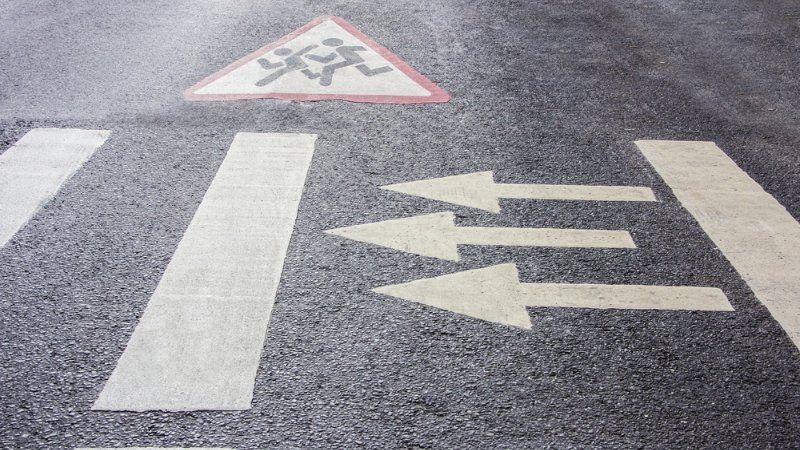
Arizona law requires drivers to stop at the line at a stop sign. If there is no stop line, the driver must stop before they enter the intersection and at the point where they have a clear view of traffic on the crossing street.
If there is a crosswalk, drivers must stop before reaching the crosswalk. Stop sign violations can result in a fine and demerit points on your driving record. Failing to stop at a stop sign can also lead to reckless driving or vehicular homicide charges if the person who didn’t stop causes an accident that injures or kills someone.
Who Goes First at a Four-Way Stop?
All drivers approaching a four-way stop must stop their vehicles completely, even if there are no other vehicles in or approaching the intersection. Drivers who reach the intersection first have the right of way and should proceed into the intersection.
If more than one vehicle stops at a four-way stop at the same time, drivers should proceed in the order they reach the intersection. For example, if driver one reaches the intersection first and enters it, and driver three reaches the intersection while driver two is waiting for driver one, driver three must wait for driver two before they proceed into the intersection.
If you arrive at a four-way stop at the same time as a vehicle across the intersection from you, rather than to your right or left, and you and the other vehicle are both going straight, you may proceed without waiting. However, be cautious and make sure the other vehicle is going straight before you enter the intersection.
If one vehicle is going straight and the other is turning, the driver who is turning must yield to the driver who is going straight. If you are both turning and one of you is turning left and the other right, the driver turning left must yield to the driver turning right.
What Happens If Four Cars Come to a Four-Way Stop at the Same Time?
When drivers reach a four-way stop at the same time, they are often unsure who has the right of way at a four-way stop. The driver furthest to the right should proceed into the intersection first. However, because many drivers don’t know this rule or don’t follow it, drivers should always wait a few seconds and yield if another vehicle enters the intersection.
Even when you have the legal right of way, the law requires you to yield when it is necessary to avoid a collision. If you aren’t sure who arrived at a four-way stop first, yield to drivers on the right.
What Are Some Tips for Safely Navigating Four-Way Stops?
Always communicate with other drivers. Use your turn signals. If you aren’t sure who arrived first and you plan to yield, wave the other driver on so they know your intention.
Proceed with caution. If someone doesn’t know the rules or ignores them, you may be able to avoid a collision.
Avoid aggressive driving. Patiently wait for your turn, and don’t attempt to retaliate against drivers who violate the right of way.
Don’t assume what other drivers will do, and don’t insist on taking the right of way. It is better to yield when you have the right of way than to cause a collision.
Know the rules, and don’t be timid when you approach four-way stops. Be cautious and yield when necessary to avoid an accident, but if it is safe to proceed when you have the right, do so. Waiting without signaling your intention to yield can confuse other drivers and lead to multiple vehicles attempting to enter the intersection at the same time.
What Should Drivers Do When There Is No Traffic Signal or Sign?
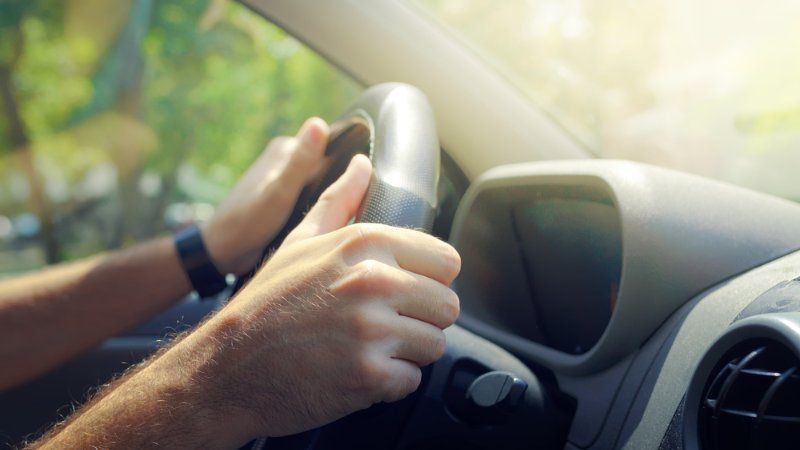
If there is no traffic signal or sign, drivers must yield to traffic that is already proceeding through the intersection when they arrive. If you arrive at the same time as other vehicles, the right-of-way rules work the same as for a four-way stop.
How Does Who Has the Right of Way at a Four-Way Stop Affect Personal Injury Cases?
All road users must follow traffic laws. Failing to follow traffic laws is negligence.
When a road user’s negligence results in an accident that injures someone, the negligent party may be liable for that person’s injuries. As a result, determining which road user had the right of way and whether a road user’s failure to yield caused an accident can have a big impact on who is liable for damages.
Generally, a road user who fails to yield the right of way, causing an accident, is responsible for at least a portion of the other party’s damages. Because Arizona uses a comparative fault system, sometimes the insurance company or court will assign blame to more than one party.
For example, a driver who fails to yield the right of way may be the majority at fault, but if the other driver had time to stop and failed to do so, the driver with the right of way may share a percentage of the blame. When both parties share fault, each party’s share of the fault will proportionately reduce the compensation they can receive from the other party.
For example, the driver who failed to yield is 70% at fault, and the driver who failed to reduce speed to avoid an accident is 30% at fault. In this case, the first driver can collect 30% of their damages from the second driver, and the second driver can collect 70% of their damages from the first driver.
Disputes over the share of fault in an accident are common. A car accident lawyer will protect your rights and gather evidence to prove your case when there is a dispute over liability.
Who Determines Which Driver Had the Right of Way at a Four-Way Stop?
When a traffic accident occurs, the insurance company will determine which driver had the legal obligation to yield the right of way when settling an insurance claim. The jury or the judge decides who had the right of way when a personal injury case involves an auto accident.
To make this determination, the claims adjuster, jury, or judge will consider the evidence, such as the impact points on the vehicles, the testimony of the involved parties and witnesses, and the police report. They will also consider the applicable Arizona traffic laws.
It is not uncommon for road users to disagree about who had the right of way. A motor vehicle accident attorney in Phoenix, AZ can help prove your case when there is a discrepancy over who had the right of way.
If Someone Violated Your Right of Way at a Four-Way Stop, We Can Help
Understanding who has the right of way at a four-way stop will help you protect your legal rights. If someone’s negligence caused your injuries in an accident at a four-way stop, you need a personal injury attorney in Phoenix to fight for you. Contact the Sargon Law Group to schedule a free consultation.
